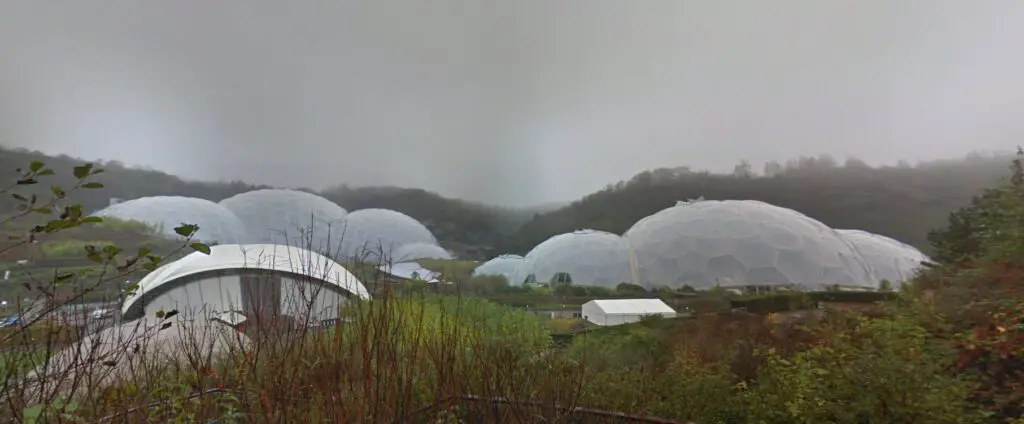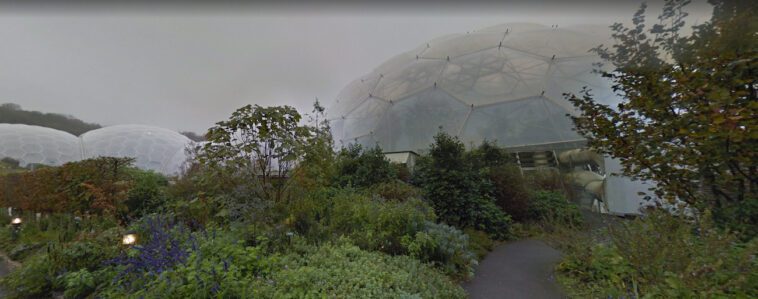In the lush panorama of Cornwall, England, one finds the distinct biomes of the Eden Project nestled among the terrain like extraordinary geological formations – a testament to a daring architectural marvel. The date that construction began on this impressive endeavour, March 1998, marked the initiation of a project set to become an iconic symbol of sustainable architecture and ecological responsibility.
The Eden Project officially opened its doors on March 17, 2001, inviting the public to journey into the architectural representations of diverse ecosystems. The total cost of the project was a staggering £141 million, an investment indicative of the grand scale and vision of the undertaking.
This ecological wonderland was brought to life under the creative guidance of the architectural firm Grimshaw Architects, led by Sir Nicholas Grimshaw. Best known for his innovative and future-forward designs, Grimshaw envisioned the Eden Project as a testament to the intertwining relationship of humanity and nature. His architectural style is one that defies conventional boundaries, seamlessly integrating structures into their environment.
The Eden Project comprises two expansive biomes, or indoor garden areas, each housed within a series of interconnected geodesic domes. Together, these biodomes cover approximately 23,000 square metres of enclosed area. These biomes reach a height of approximately 55 metres, equivalent to the stature of an 11-storey building, making them the largest greenhouses in the world.
Designed with a striking commitment to sustainability, these biomes house thousands of plant species, recreating the diverse environments of rainforests and the Mediterranean. Their function serves as an educational centre, promoting understanding and conservation of our planet’s precious biodiversity. The centre offers various educational programmes and workshops aimed at a wide range of ages and interests, highlighting the intricate web of relationships within these unique ecosystems.
Situated at Bodelva, Cornwall, PL24 2SG, United Kingdom, the Eden Project can be reached at +44 1726 811911. To explore this awe-inspiring vision of architectural and environmental harmony, visitors can log on to www.edenproject.com to find detailed information about the project, exhibitions, and other pertinent details.
In terms of accessibility, the Eden Project typically operates between 9:30 AM to 6:00 PM daily.
Entering the Eden Project is like stepping into another world. The Rainforest Biome, the largest of the two, is a tropical haven, lush with exotic palms, towering bamboo shoots, and cascading waterfalls. It also houses various tropical fruits like bananas, coffee, rubber and giant bamboo, mimicking the ecological conditions of the world’s rainforests.
In contrast, the Mediterranean Biome exudes a sun-baked ambiance, filled with fragrant herbs, vibrant blooms, and sprawling vines. Here one can find olives and grape vines of the Mediterranean, along with various species from South Africa and California.
The external frame of these biomes, a network of hexagonal and pentagonal transparent cells supported by steel frames, adds to the overall futuristic appearance of the site. It also allows for maximum sunlight penetration, creating a nurturing environment for the diverse plant species within.
But the Eden Project isn’t only about the biomes. Outside, the landscape continues to awe and inspire. Known as the “Outdoor Biome”, this area consists of plants from temperate regions, showcasing how people and plants can live together sustainably.
The design of the Eden Project goes beyond mere aesthetics; it’s a study in the symbiotic relationship between architecture and the environment. It demonstrates how a built structure can foster, nurture and sustain a thriving ecosystem within it while serving as an educational platform for visitors to learn about the world’s diverse environments.

In a blow to nature enthusiasts and visitors, the iconic Eden Project in Cornwall, UK, remained shuttered for an extended period, starting in 2020. The closure, initially due to the ravages of the COVID-19 pandemic, saw a glimmer of hope when it reopened on December 3, following the region’s shift into tier 1 restrictions. However, that optimism was short-lived as unforeseen circumstances unfolded.
On December 20, 2020, devastating landslides and floods wreaked havoc on the area surrounding the Eden Project, forcing its closure until further notice. These calamitous events were triggered by heavy rainfall, resulting in three major landslides, which were captured on video and have since gained attention in the media.
In conclusion, the Eden Project serves as a global garden, a living theatre of plants and people, and a symbol of transformation, embodying a vision of a future where nature and humanity coexist and thrive together. It is an architectural masterpiece, a testament to how innovative design can harmonise with nature, and a beacon that inspires us to reimagine our relationship with the natural world.
Further Information On The Eden Project in United Kingdom
Date Construction started: 1998
Date Opened: March 17, 2001
Cost of building: £141 million
Architect: Nicholas Grimshaw
Architectural style: High-tech architecture
Size or floor area: The Eden Project comprises two expansive biomes covering approximately 23,000 square metres of enclosed area.
Height: The biomes at the Eden Project reach a height of approximately 55 meters, equivalent to the stature of an 11-storey building.
Function or purpose: The Eden Project serves as an educational centre, promoting understanding and conservation of biodiversity. It offers various educational programs and workshops highlighting the intricate relationships within different ecosystems.
Address: Bodelva, Par PL24 2SG, United Kingdom
Phone number: +44 1726 811911
Website www.edenproject.com.
Opening hours: typically operates between 9:30 AM to 6:00 PM daily




